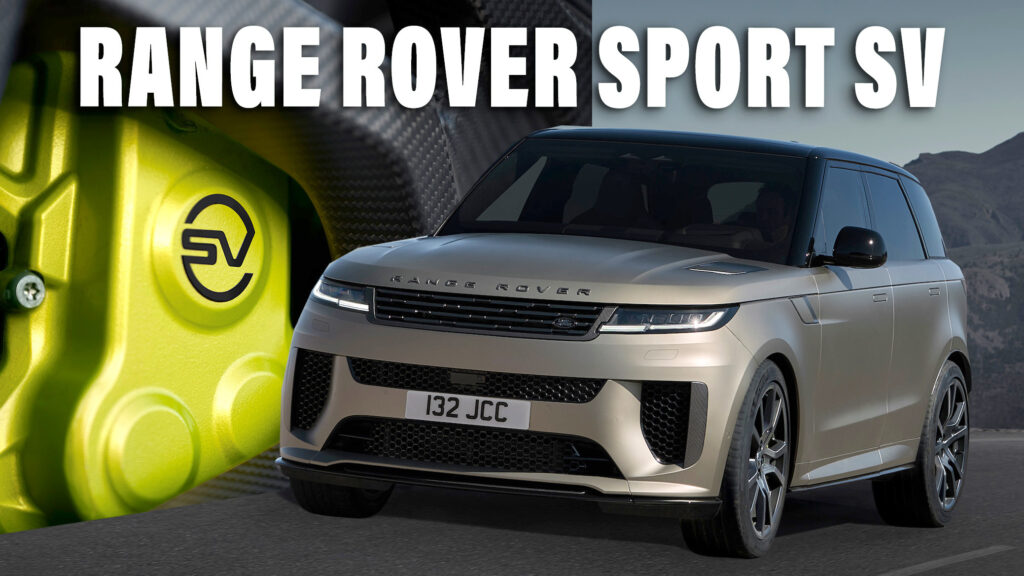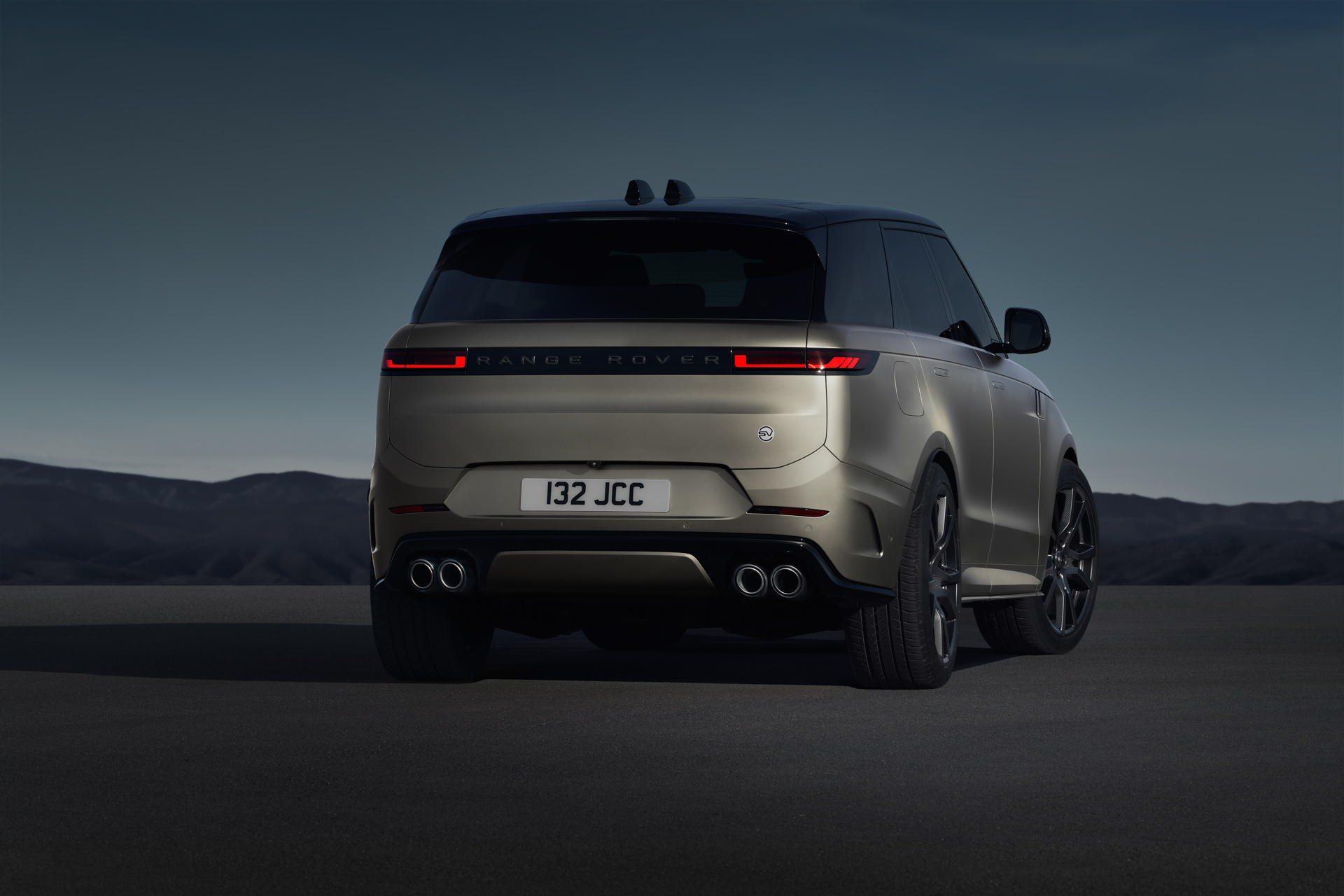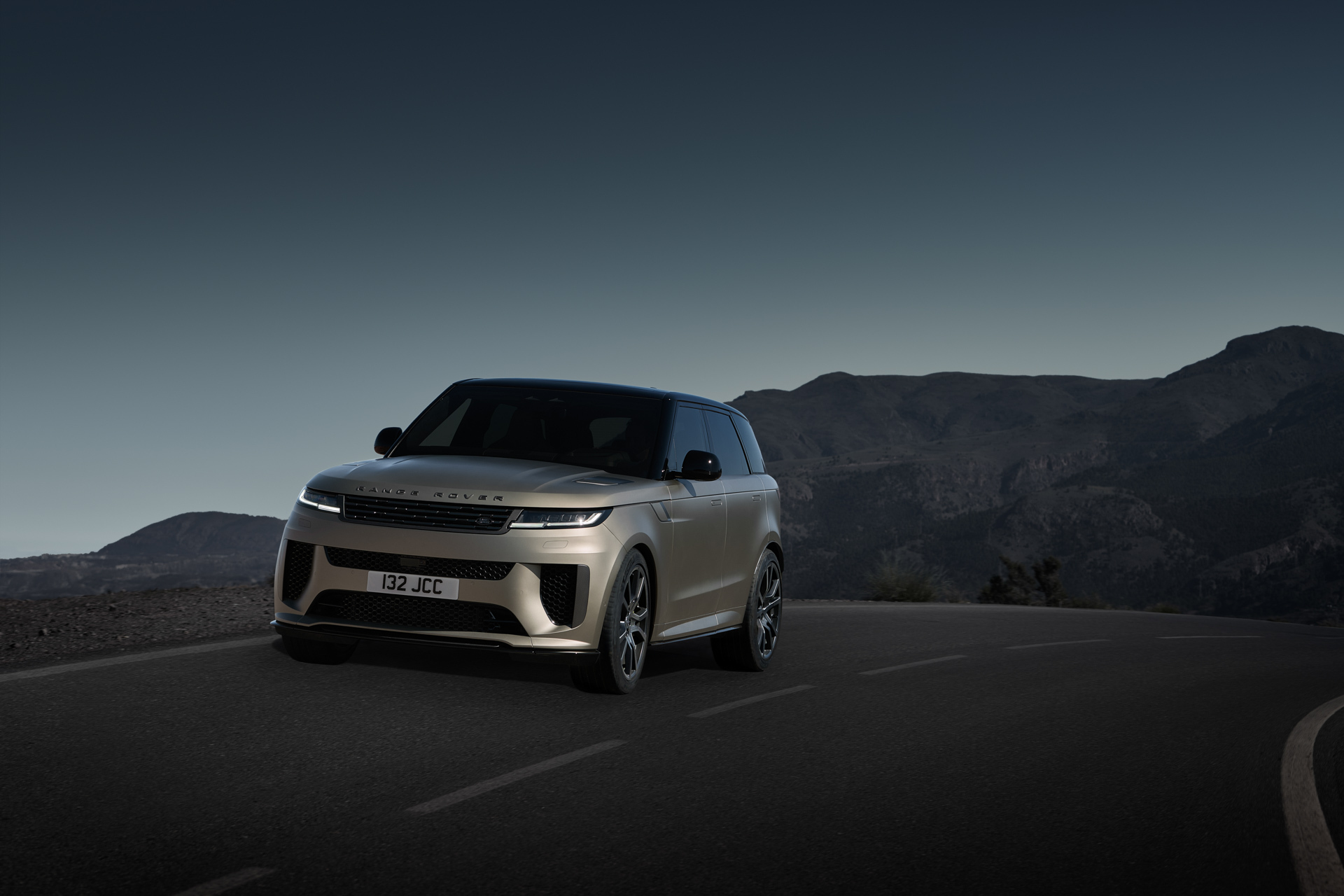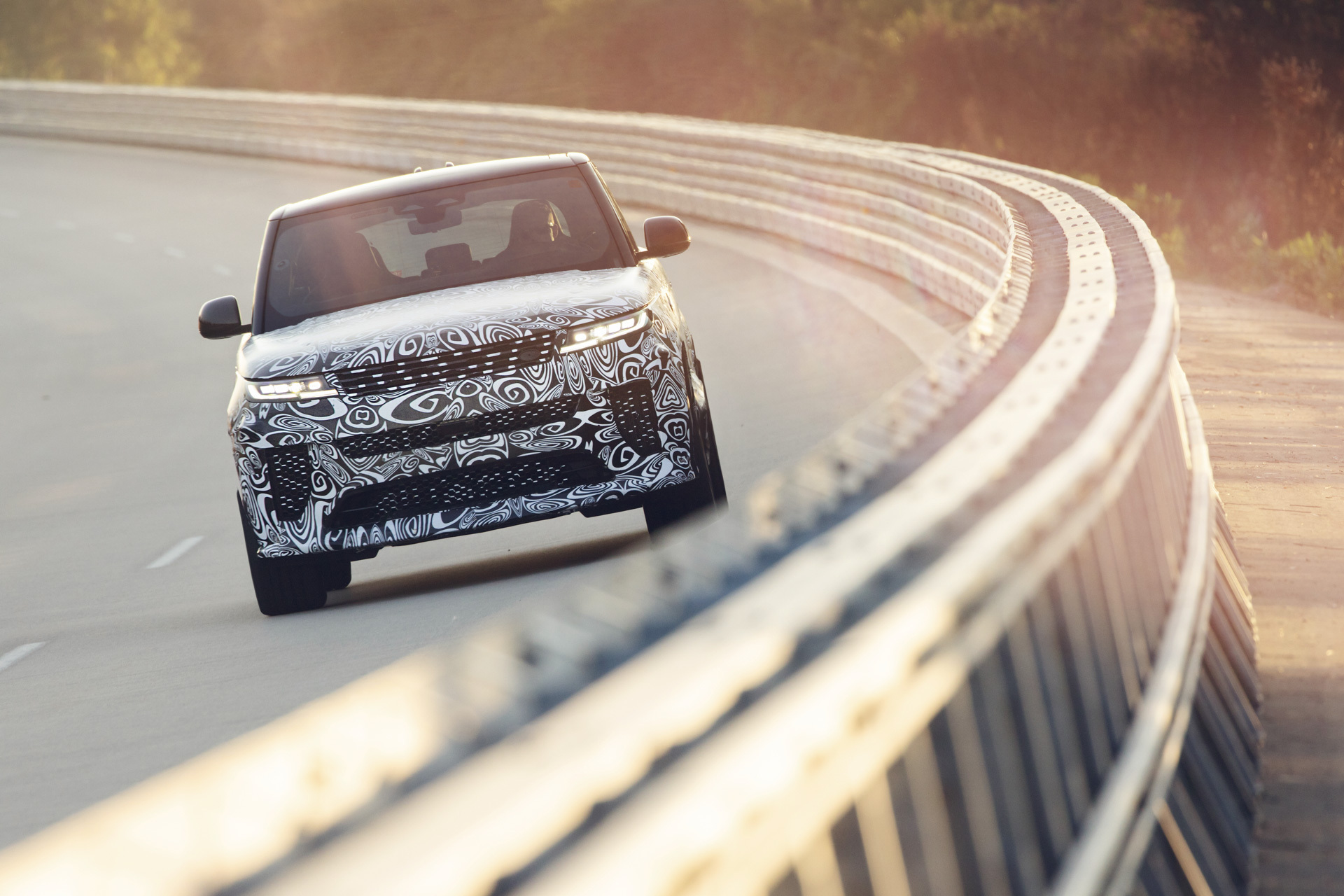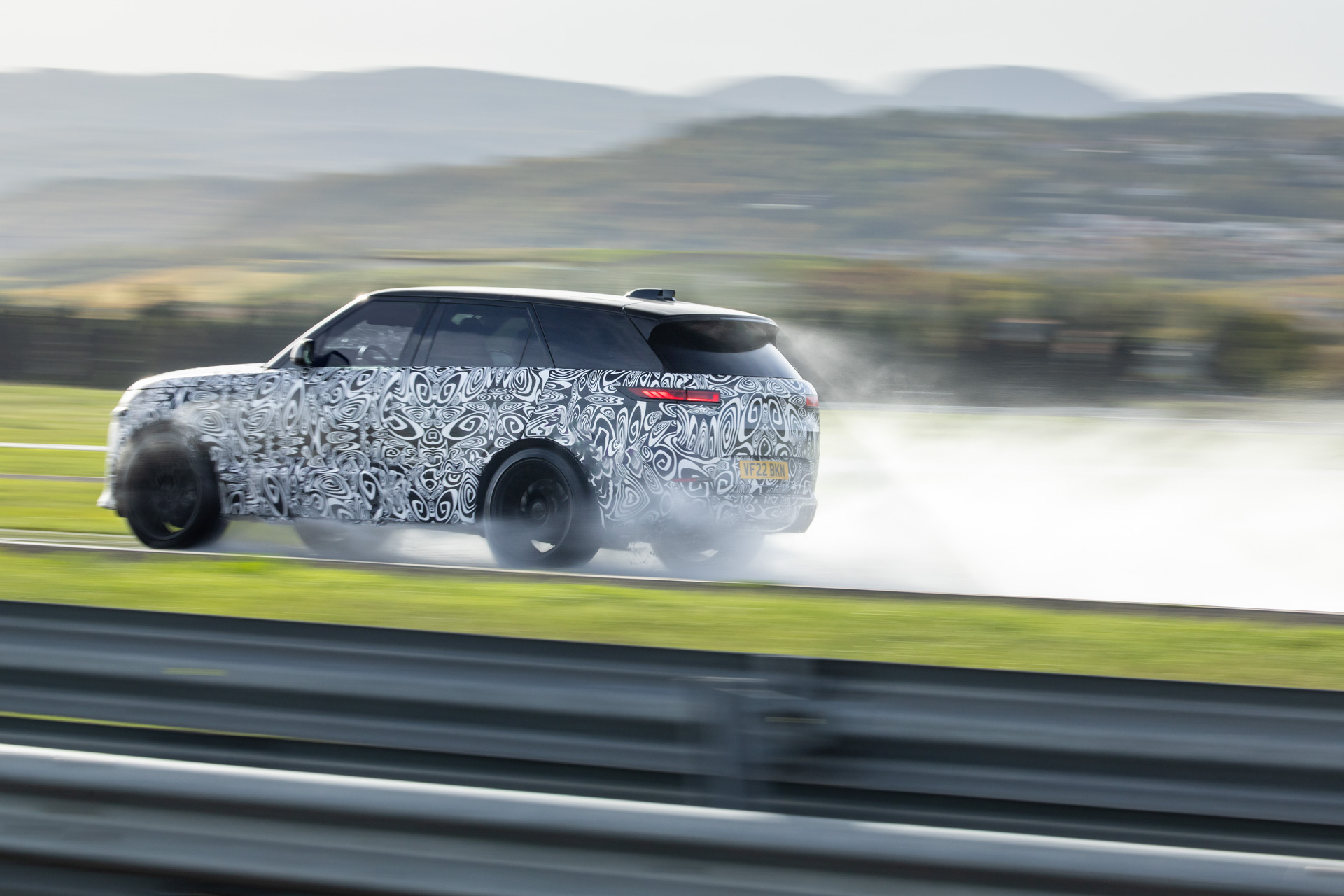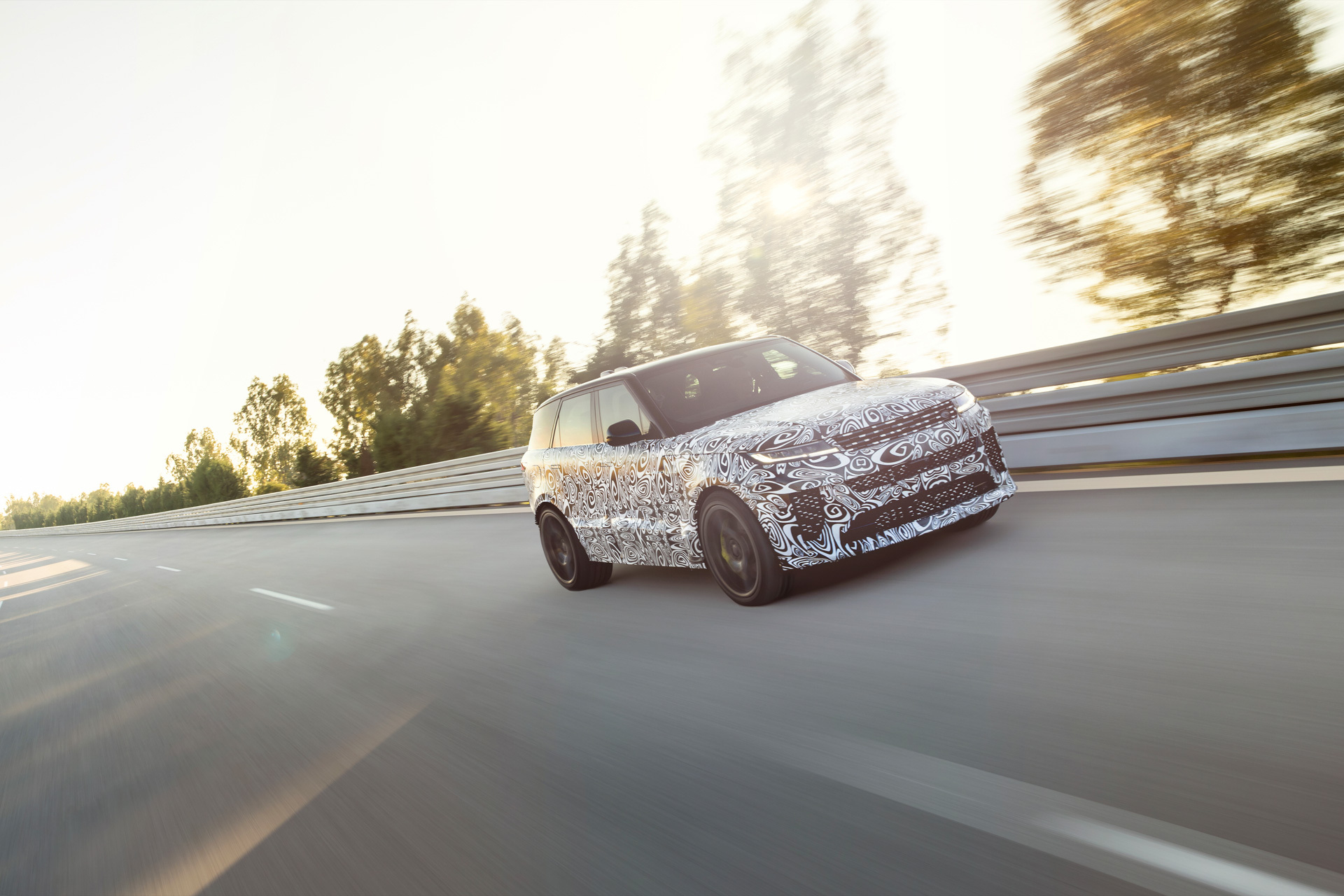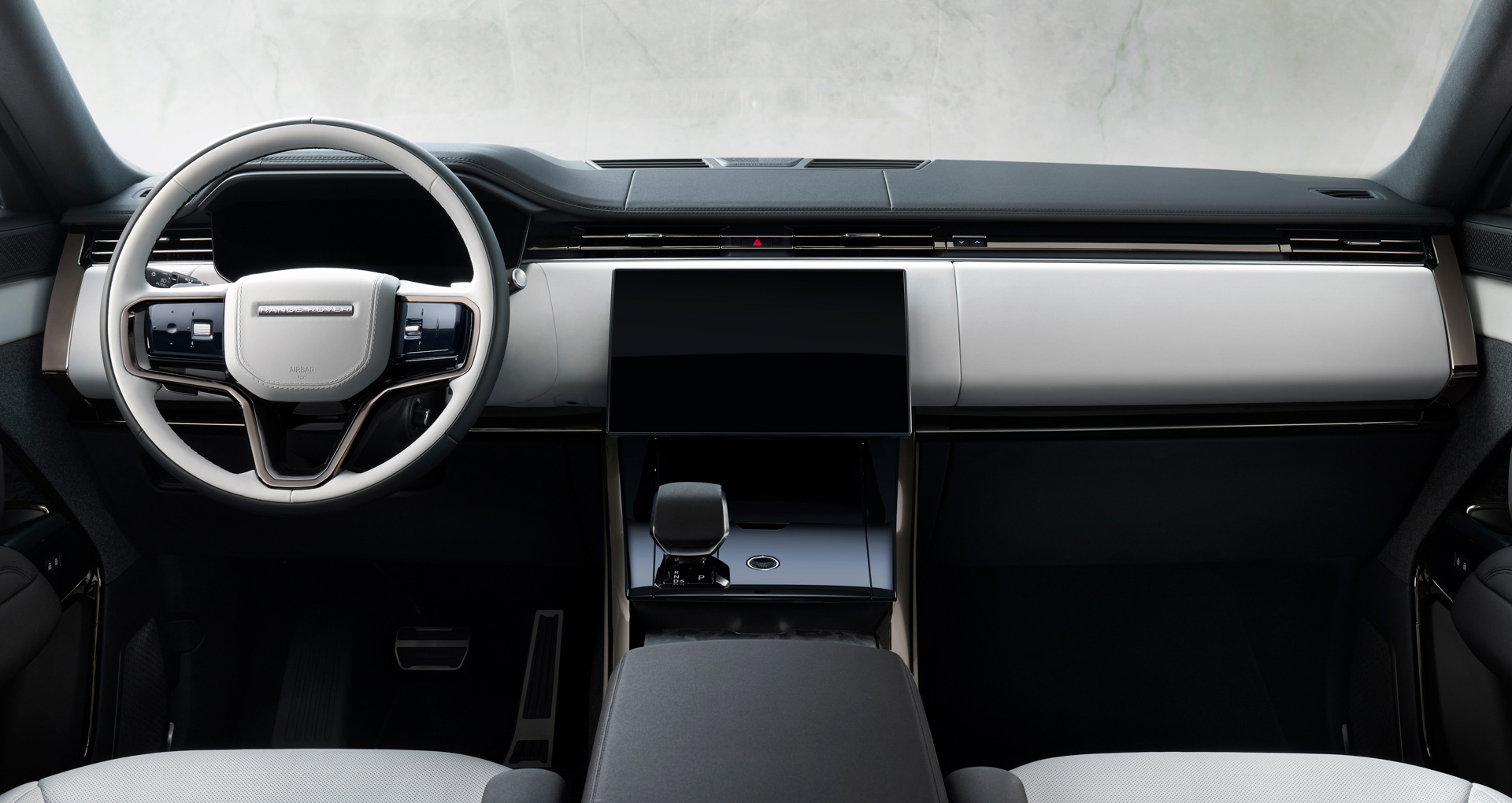The Range Rover Sport hasn’t always been the most performance-focused SUV in the market, despite the promise of that name. But now Land Rover has really put the ‘Sport’ into the Sport with the launch of the new Range Rover Sport SV, the most powerful Land Rover yet.
When Land Rover introduced the 2024 MY updates for the full-size Range Rover a couple of weeks back, revealing that it would be available with a 607 hp (615 PS) version of the BMW-sourced 4.4-liter V8 in the P615, we speculated that engine would find its way into the Range Rover Sport SV. But in fact Land Rover’s engineers have gone further with the SV, edging the power up to 626 hp (635 PS), although the peak torque of 553 lb-ft (750 Nm) is the unchanged unless you engage Dynamic Launch Mode, when you get a brief boost to 590 lb-ft (800 Nm) courtesy of the mild-hybrid system.
Those figures represent huge leaps over the 567 hp (575 PS) and 516 lb-ft (700 Nm) pumped out by the supercharged 5.0-liter V8 of the previous generation SVR this SV replaces. The new car’s 3.6-second zero to 60 mph (96 km/h) also kicks sand in the face of the old SVR which needed 4.3 seconds, and CO2 emissions are claimed to be 15 percent lower.
But we still suspect that Land Rover might be saving an even hotter SVR for later to tackle the Porsche Cayenne Turbo GT. The Porsche was recently hopped-up to 650 hp (659 PS), hits 60 mph in 3.1 seconds and outruns the 180 mph (290 km/h) Sport SV thanks to a 189 mph (304 km/h) top end.
Related: 2024 Range Rover Gets Up To 606 HP And New SV Bespoke Commissioning Service
Carbon Wheels And Brakes – For A Price
Still, a 626 hp SV is going to feel plenty fast, and to make sure it also feels plenty controllable Land Rover has tweaked the rest of the hardware to suit, though you’ll have to pay extra for some of the best bits. Desirable optional upgrades include the first 23-inch carbon wheel fitted to a production car to help cut unsprung weight and rotational mass, and the first carbon ceramic brakes to be offered on a Land Rover SUV.
The wheels save a total of 80.5 lbs (36.5 kg), and the carbon rotors, 75 lbs (34 kg). Factor in the standard carbon hood and the total saved is 168 lbs (76 kg), though the 5,479 lbs (2,485 kg) overall curb weight is still fairly huge, not to mention almost 600 lbs (272 kg) up on the Cayenne Turbo GT’s.
To disguise that heft Land Rover has added its quickest ever steering rack and says its 6D Dynamics suspension’s combination of interlinked hydraulic dampers and height-adjustable air springs that remove the need for anti-roll bars makes the SV’s chassis the most sophisticated in its class. Its engineers have also fitted staggered tire sizes for the first time (285s on the front, 305s on the back), which LR claims contributes to 1.1G of lateral grip on all-season tires. That’s a massive 22 percent improvement on what the old SVR could do on summer tires and makes it a match for some proper sports cars.
SV Driving Mode, Seats With Soul
To make the most of those improvements drivers will be making a beeline for the SV mode button on the steering wheel, which tweaks the steering, transmission, active exhaust and suspension maps, reducing the ride height by an additional 15 mm (0.6-in) beyond the 10-25 mm (0.4-1.0 inches) drop the SV enjoys versus other Range Rover Sports.
Helping it look even closer to the pavement is a an aggressive new front bumper and side skirts, while quad tailpipes at the rear make clear this is no feeble four-cylinder Sport. There are more SV-specific details inside, including carbon-backed sports seats with integrated headrests and SV logos, a cool-touch ceramic gear shifter on the console and edge-lit shift paddles on the steering wheel, which Land Rover says is a world first.
But a far more interesting world first is the Body and Soul Seat (BASS), which analyzes music tracks being played by the 29-speaker, 1,430-Watt Meridian Hi-Fi and transmits matching vibrations through the front chairs to really immerse you in the audio experience. And that’s not all it can do. Need a zen-like escape from a hideous rush-hour traffic snarl up, or a wake-up to keep you powering through it? You can choose from six tracks specially developed to either reduce anxiety or boost alertness.
If you’re sold on the idea of putting a Range Rover Sport SV in your garage then we’re sorry to break it to you but they’re all sold out, or at least the first year of production is. The only version of SV available for the 2024 Model Year is the fully-loaded £171,460 SV Edition One, which gets special branding on the front splitter, center console, treadplates and puddle lamps, and the entire run has been pre-allocated to Range Rover buyers.
Engine And Interior Upgrades For Other RR Sport Models
Related: Manhart’s Sport SV 650 Is A Very Special Range Rover Sport
The arrival of the SV is the standout news for the Range Rover Sport’s return for the 2024 season, but it’s far from the only important Sport news. The P530 adopts the mild-hybrid version of BMW’s 4.4-liter V8, which should make a small improvement to efficiency, though the 523 hp (530 PS) output is unchanged. And the old P510 plug-in hybrid is renamed P550e to reflect an upgrade from 503 hp (510 PS) to 542 hp (550 PS) thanks to a more powerful electric motor fitted inside the automatic transmission.
Torque is also up in the PHEV, jumping from 516 lb-ft (700 Nm) to 590 lb-ft (800 Nm), which helps cut the zero to 60 mph time from 5.2 seconds to 4.7 seconds, and the electric driving range improves slightly from 70 miles (113 km) to 75 miles (121 km).
That PHEV upgrade mirrors the changes already announced for the bigger Range Rover, as does the arrival of the Country Road Assist cruise control that will use map data to slow you down on the approach to bends. Every model also gets the latest version of Land Rover’s 13.1-inch Pivi Pro infotainment system that works with Amazon Alexa, is claimed to be less fiddly to use and provides haptic feedback.
The new Range Rover Sport costs from £83,620 in the UK. We’ll add prices for the U.S as soon as we have them.




